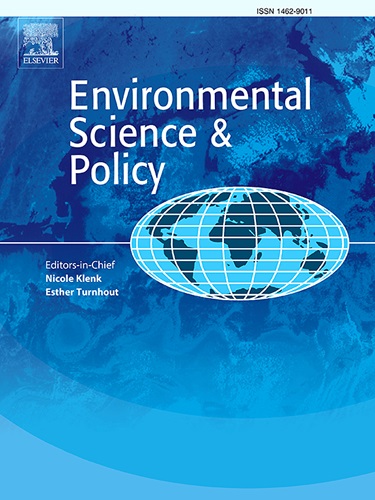建立科学-政策-实践界面:来自科罗拉多河流域边界组织的见解
IF 5.2
2区 环境科学与生态学
Q1 ENVIRONMENTAL SCIENCES
引用次数: 0
摘要
除了对科学如何更好地为决策提供信息的兴趣日益增长之外,研究还集中在边界组织的作用上,这些组织在科学、政策和实践界面(SPPI)上工作。对边界组织的实证分析相对较少,对边界组织中涉及的人员如何导航这一界面知之甚少。我们着眼于科罗拉多河流域,在那里已经建立了多个边界组织,以应对沿河的挑战。通过对联邦政府发起的组织从业者的关键信息提供者访谈,我们问:科学在这些组织中的作用是什么,他们在SPPI面临的挑战是什么?边界组织的从业者认为科学对于更好地理解系统、告知和修改管理行为以及评估管理行为是否有效非常重要。同时,实践者描述了使科学活动适应不断变化的环境条件的挑战,以及驾驭不确定性的困难。此外,组织的结构限制了其在SPPI上的范围,并且制定决策的方式可能会延迟政策的影响。尽管面临这些挑战,流域的边界组织仍是知识交流、促进关系和努力实现更综合的水治理方法的关键中介。通过从从业者的角度考察这些动态,我们的研究为SPPI的成功和局限性提供了有价值的见解。在此过程中,我们有助于就边界组织如何在建设SPPI中发挥更大作用进行更广泛的讨论。本文章由计算机程序翻译,如有差异,请以英文原文为准。
Building the science-policy-practice interface: Insights from boundary organizations in the Colorado River Basin
Alongside growing interest in how science can better inform decision-making, research has focused on the role of boundary organizations, which work at the science, policy, and practice interface (SPPI). Empirical analyses of boundary organizations are relatively sparse, and little is known about how people involved in boundary organizations are navigating this interface. We look to the Colorado River Basin, where multiple boundary organizations have been established in response to challenges along the river. Drawing on key informant interviews with practitioners in federally-initiated organizations, we ask: what is the role of science in these organizations, and what are the challenges that they face at the SPPI? Practitioners in boundary organizations see science as important to better understand the system, inform and modify management actions, and evaluate whether management actions are working. At the same time, practitioners describe the challenge of adapting scientific activities to changing environmental conditions, and difficulties navigating uncertainties. Further, the structure of an organization limits its scope at the SPPI, and the ways that decisions are made can delay policy impacts. Despite these challenges, boundary organizations in the Basin serve as key intermediaries for knowledge exchange, fostering relationships, and working towards more integrated approaches to water governance. By examining these dynamics through the perspectives of practitioners, our study provides valuable insights into both the successes and limitations of the SPPI. In doing so, we contribute to broader discussions on how boundary organizations can enhance their role in building the SPPI.
求助全文
通过发布文献求助,成功后即可免费获取论文全文。
去求助
来源期刊

Environmental Science & Policy
环境科学-环境科学
CiteScore
10.90
自引率
8.30%
发文量
332
审稿时长
68 days
期刊介绍:
Environmental Science & Policy promotes communication among government, business and industry, academia, and non-governmental organisations who are instrumental in the solution of environmental problems. It also seeks to advance interdisciplinary research of policy relevance on environmental issues such as climate change, biodiversity, environmental pollution and wastes, renewable and non-renewable natural resources, sustainability, and the interactions among these issues. The journal emphasises the linkages between these environmental issues and social and economic issues such as production, transport, consumption, growth, demographic changes, well-being, and health. However, the subject coverage will not be restricted to these issues and the introduction of new dimensions will be encouraged.
 求助内容:
求助内容: 应助结果提醒方式:
应助结果提醒方式:


